WAF Solution: Complete Guide to Choose WAF
Explore a comprehensive guide to selecting the right WAF (Web Application Firewall) solution for your cybersecurity needs. Delve into key factors such as features, deployment options, and integration capabilities to fortify your network security posture effectively. With this detailed overview, navigate the landscape of WAF solutions confidently and safeguard your web applications from evolving threats.
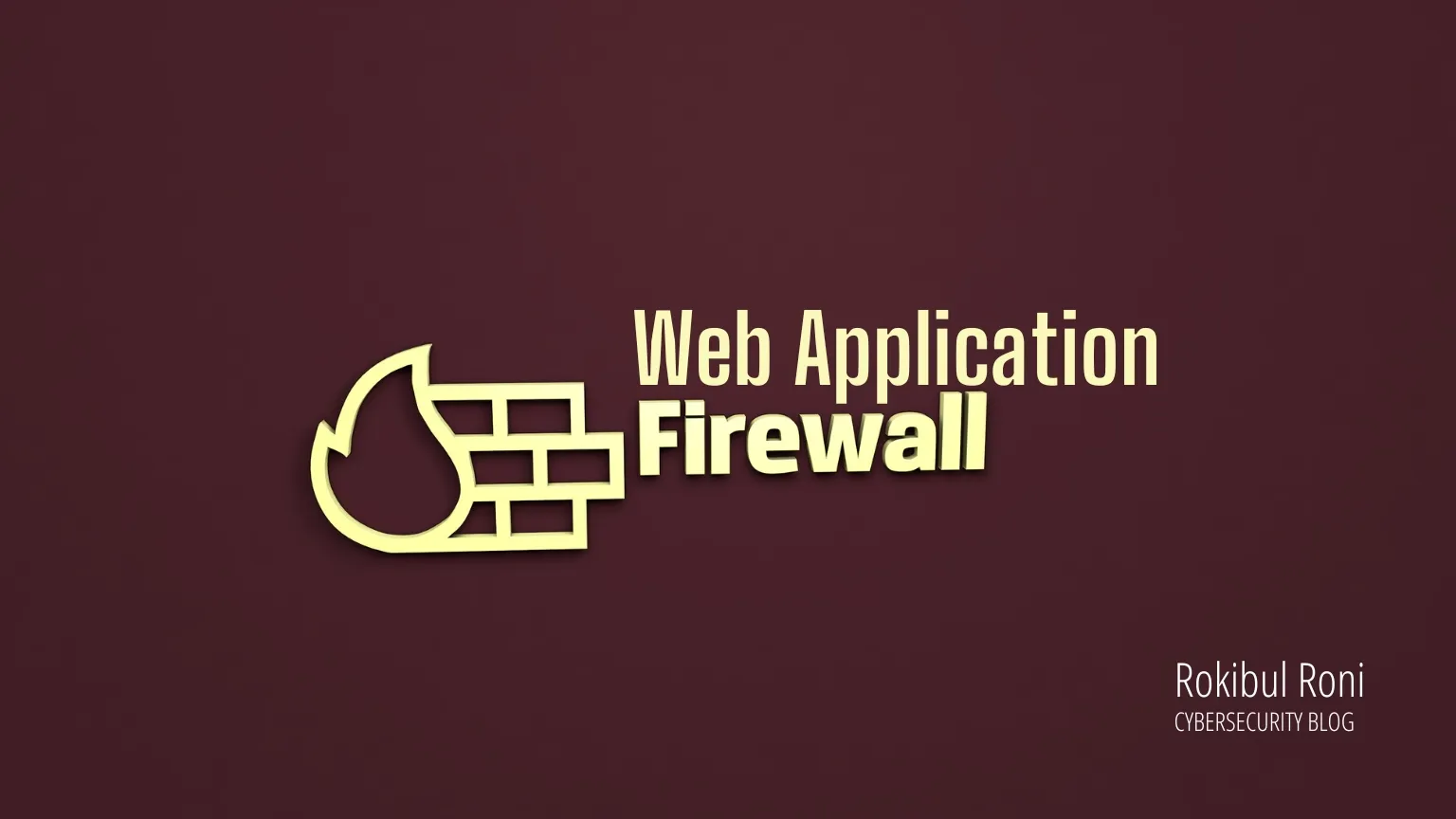
A Web Application Firewall (WAF) is a security system that monitors, filters or blocks incoming traffic to a web application. Its main function is to protect web applications from malicious attacks and threats, such as SQL injection, cross-site scripting (XSS), and request forgery (CSRF), by inspecting the incoming HTTP traffic and enforcing security rules.
WAFs can be deployed on-premise or in the cloud and can be implemented as hardware, software, or a combination of both. They can also be used to protect individual web applications or to provide security for multiple applications running on a web server.
WAFs typically use signature-based detection or anomaly-based detection to identify and block malicious traffic. Signature-based detection relies on a database of known attack patterns, while anomaly-based detection uses machine learning algorithms to identify traffic patterns that deviate from normal behavior.
In summary, WAFs play a crucial role in securing web applications and protecting sensitive information from being stolen or compromised.

Types of (Web Application Firewalls) WAF
There are two main types of Web Application Firewalls (WAFs):
- Network-based WAFs: These WAFs are typically deployed at the network perimeter and act as reverse proxies, inspecting all incoming traffic to the web application. They can be hardware or software-based and are typically used to provide protection for multiple applications running on a single web server.
- Application-based WAFs: These WAFs are deployed on the same server as the web application and offer protection by monitoring and filtering traffic between the application and the client. Application-based WAFs can provide a more granular level of protection as they have a deeper understanding of the application and its behavior.
Additionally, WAFs can be further classified based on their implementation and deployment method:
- Cloud-based WAFs: These WAFs are deployed and managed by a cloud service provider and can be used to protect web applications hosted in the cloud.
- On-premise WAFs: These WAFs are deployed and managed on-site and can be used to protect web applications hosted in a local environment.
- Hybrid WAFs: These WAFs combine elements of both cloud-based and on-premise WAFs, offering the benefits of both deployment methods.
What does WAF protect against?
A Web Application Firewall (WAF) protects against a wide range of security threats, including:
- SQL Injection: This is a type of attack where malicious code is inserted into a SQL database, potentially allowing an attacker to access sensitive information or execute malicious actions.
- Cross-Site Scripting (XSS): This type of attack involves injecting malicious code into a web application, which is then executed by unsuspecting users visiting the site. This can lead to the theft of sensitive information, such as cookies or login credentials.
- Cross-Site Request Forgery (CSRF): This type of attack involves tricking a user into executing an unintended action, such as transferring funds or changing account information, by exploiting a vulnerability in a web application.
- Remote File Inclusion (RFI): This type of attack involves injecting malicious code into a web application by exploiting a vulnerability in the way the application handles remote files.
- Brute Force Attacks: This type of attack involves repeatedly trying different combinations of username and password credentials in an attempt to gain unauthorized access to a web application.
- Distributed Denial of Service (DDoS) Attacks: This type of attack involves overwhelming a web application with a large volume of traffic, making it unavailable to legitimate users.
- Malicious File Uploads: This type of attack involves uploading malicious files, such as malware or scripts, to a web application, potentially allowing an attacker to execute malicious code or steal sensitive information.
How a Web Application Firewall Works
A Web Application Firewall (WAF) works by inspecting incoming traffic to a web application and enforcing security rules to block or allow the traffic. The basic process of how a WAF works can be broken down into the following steps:
- Traffic Inspection: The WAF inspects all incoming traffic to the web application, analyzing the HTTP request and response to determine whether it is safe or not. The WAF may also inspect other elements of the traffic, such as headers, parameters, and cookies.
- Rule Matching: The WAF then checks the incoming traffic against a set of security rules to determine whether the traffic is allowed or blocked. These security rules can include rules to detect and block specific types of attacks, such as SQL injection, cross-site scripting (XSS), and request forgery (CSRF), or rules to enforce specific security policies, such as requiring SSL encryption.
- Threat Detection: If the incoming traffic matches a known attack pattern or violates a security rule, the WAF will classify it as a threat and take appropriate action, such as blocking the traffic or logging the attack for later analysis.
- Request Forwarding: If the incoming traffic is deemed safe, the WAF will forward the request to the web application for processing. The WAF may also modify the request to remove malicious elements or to add security headers before forwarding the request.
- Response Inspection: After the web application has processed the request, the WAF will inspect the response before forwarding it back to the client. This step is important for detecting and blocking attacks that exploit vulnerabilities in the application’s output, such as cross-site scripting (XSS) attacks.
Benefits of WAF
There are several benefits of using a Web Application Firewall (WAF):
- Improved Security: A WAF helps to protect against a wide range of security threats, such as SQL injection attacks, cross-site scripting (XSS) attacks, and malicious bots, by inspecting incoming traffic and blocking malicious requests before they can reach the web application.
- Compliance: WAFs can help organizations comply with various security standards and regulations, such as the Payment Card Industry Data Security Standard (PCI DSS) and the Health Insurance Portability and Accountability Act (HIPAA), by providing a layer of protection against security threats.
- Increased Visibility: WAFs provide organizations with visibility into incoming traffic, allowing them to identify and respond to security threats in real-time. This helps organizations to quickly identify and respond to security incidents, reducing the risk of data breaches and other security incidents.
- Scalability: WAFs can help organizations to scale their security infrastructure as their web application and user base grows. By offloading security-related tasks to the WAF, organizations can reduce the load on their web servers, improving the performance and reliability of their web applications.
- Customizability: Many WAFs allow organizations to customize their security policies and rules, allowing them to fine-tune their security infrastructure to meet their specific needs.
How many layers in WAF Protection?
Typically, Web Application Firewalls (WAFs) provide protection in multiple layers, with each layer serving a specific purpose in the defense of the web application. The exact number of layers in a WAF protection system can vary depending on the specific WAF solution and the specific security requirements of the web application, but commonly, WAF protection is provided in three to four layers:
- Input validation layer: This layer of protection checks incoming traffic for validity, looking for any suspicious or malicious payloads that may contain harmful code.
- Signature-based detection layer: This layer of protection uses a set of pre-defined security signatures to detect and block known attacks, such as SQL injection, cross-site scripting (XSS), and request forgery (CSRF).
- Behavioral analysis layer: This layer of protection examines the behavior of the web application and incoming traffic to detect and block any unusual or suspicious activity that may indicate an attack.
- Machine learning layer: This layer of protection uses advanced machine learning algorithms to detect and block unknown or zero-day attacks that are not detected by the other layers.
What are WAF Rules?
Web Application Firewall (WAF) rules are a set of security policies and controls that determine how the WAF should handle incoming traffic to a web application. WAF rules are used to enforce security policies and detect and block specific types of attacks, such as SQL injection, cross-site scripting (XSS), and request forgery (CSRF).
WAF rules typically include the following elements:
- Conditions: Conditions define the circumstances under which a rule should be applied. For example, a rule might be applied to all traffic that originates from a specific IP address range or to all traffic that contains a specific type of payload, such as an SQL query.
- Actions: Actions define what the WAF should do if the conditions for a rule are met. For example, a rule might block the traffic, log the attack for later analysis, or redirect the traffic to a different page.
- Priority: Priority determines the order in which rules are applied. Rules with higher priority are applied before rules with lower priority, allowing the WAF to enforce security policies in a specific order.
- Status: Status determines whether a rule is active or inactive. Inactive rules are not applied to incoming traffic, allowing administrators to temporarily disable rules if needed.
WAF rules can be created and managed through the WAF management console, and they can be updated dynamically as new threats are discovered or as the security requirements of the web application change.
Common web application attacks and code injection techniques
There are several common types of web application attacks and code injection techniques that can be used to exploit vulnerabilities in a web application and gain unauthorized access to sensitive information. Some of the most common web application attacks and code injection techniques include:
- SQL Injection: SQL injection attacks are a type of code injection attack that target the database of a web application. The attacker injects malicious SQL code into the web application’s input fields, which is then executed by the database and can result in the exposure of sensitive information or the ability to execute arbitrary commands on the database server.
- Cross-Site Scripting (XSS): XSS attacks are a type of code injection attack that target the users of a web application, rather than the web application itself. The attacker injects malicious JavaScript code into the web application, which is then executed by the user’s browser and can be used to steal sensitive information, such as passwords and credit card numbers.
- Cross-Site Request Forgery (CSRF): CSRF attacks are a type of attack that exploit the trust a web application has in a user’s browser. The attacker creates a malicious website that sends a request to a vulnerable web application, tricking the user into executing an action, such as changing their password or transferring money.
- Remote Code Execution (RCE): RCE attacks are a type of code injection attack that allow the attacker to execute arbitrary code on the web application’s server. RCE attacks can result in the complete compromise of the server and the exposure of sensitive information.
- Path Traversal: Path traversal attacks are a type of attack that exploit vulnerabilities in the way a web application handles file paths. The attacker sends a request to the web application that contains a file path that points to a sensitive file, such as a configuration file, which can then be accessed by the attacker.
- Remote File Inclusion (RFI): RFI attacks are a type of code injection attack that allow the attacker to include and execute remote files on the web application’s server. RFI attacks can result in the complete compromise of the server and the exposure of sensitive information.
In conclusion, these are just a few examples of the types of web application attacks and code injection techniques that exist. It’s important for web application developers and administrators to be aware of these types of attacks and to implement proper security measures to prevent them, such as input validation, secure coding practices, and the use of a Web Application Firewall (WAF).
DDoS attacks protection on layer 1 to 7
Protection against Distributed Denial of Service (DDoS) attacks can involve multiple layers of defense, starting from layer 1 of the Open Systems Interconnection (OSI) model to layer 7. Here’s a brief overview of the protection measures that can be implemented at each layer:
- Physical Layer (Layer 1): Protecting against DDoS attacks at the physical layer involves implementing physical security measures, such as access controls, security cameras, and fire suppression systems, to prevent unauthorized access to network infrastructure.
- Data Link Layer (Layer 2): Protecting against DDoS attacks at the data link layer involves implementing measures to prevent network tampering, such as using encrypted links and using switches with built-in security features, such as access control lists (ACLs) and port security.
- Network Layer (Layer 3): Protecting against DDoS attacks at the network layer involves implementing measures to filter traffic and prevent network congestion, such as using firewalls, routers with built-in traffic management capabilities, and load balancers.
- Transport Layer (Layer 4): Protecting against DDoS attacks at the transport layer involves implementing measures to mitigate transport layer attacks, such as SYN floods and UDP floods, such as using traffic filtering and rate limiting, and deploying TCP/IP stack hardening techniques.
- Session Layer (Layer 5): Protecting against DDoS attacks at the session layer involves implementing measures to prevent session hijacking and other session-related attacks, such as using encryption and secure authentication methods.
- Presentation Layer (Layer 6): Protecting against DDoS attacks at the presentation layer involves implementing measures to prevent attacks that exploit vulnerabilities in data representation, such as using data sanitization and input validation techniques.
- Application Layer (Layer 7): Protecting against DDoS attacks at the application layer involves implementing measures to prevent attacks that exploit vulnerabilities in web applications and services, such as using Web Application Firewalls (WAFs), input validation, and secure coding practices.
In conclusion, protecting against DDoS attacks requires a multi-layer defense strategy that involves implementing security measures at each layer of the network stack. It’s important for organizations to assess their risk and implement the appropriate protection measures to minimize the risk of successful DDoS attacks.
TOP 10 WAF Solutions in the Market
Here are the top 10 Web Application Firewall (WAF) solutions, based on their popularity and features:
- AWS WAF: Amazon Web Services (AWS) offers a cloud-based WAF that provides scalable and flexible security for web applications. It allows organizations to define custom security rules, block common attacks, and monitor incoming traffic to their web applications.
- Imperva Incapsula: Imperva Incapsula is a cloud-based WAF that provides a range of security features, including DDoS protection, bot management, and SSL/TLS encryption. It also provides real-time analytics and reporting to help organizations understand the security threats facing their web applications.
- Akamai Kona Site Defender: Akamai Kona Site Defender is a cloud-based WAF that provides a range of security features, including bot management, IP reputation management, and SSL/TLS encryption. It also provides real-time analytics and reporting to help organizations understand the security threats facing their web applications.
- Barracuda Web Application Firewall: Barracuda Web Application Firewall is a hardware-based WAF that provides a range of security features, including DDoS protection, IP reputation management, and SSL/TLS encryption. It also provides real-time analytics and reporting to help organizations understand the security threats facing their web applications.
- F5 BIG-IP Application Security Manager: F5 BIG-IP Application Security Manager is a hardware-based WAF that provides a range of security features, including DDoS protection, IP reputation management, and SSL/TLS encryption. It also provides real-time analytics and reporting to help organizations understand the security threats facing their web applications.
- Fortinet FortiWeb: Fortinet FortiWeb is a hardware-based WAF that provides a range of security features, including DDoS protection, bot management, and SSL/TLS encryption. It also provides real-time analytics and reporting to help organizations understand the security threats facing their web applications.
- Citrix NetScaler Application Firewall: Citrix NetScaler Application Firewall is a hardware-based WAF that provides a range of security features, including DDoS protection, bot management, and SSL/TLS encryption. It also provides real-time analytics and reporting to help organizations understand the security threats facing their web applications.
- Radware DefensePro: Radware DefensePro is a hardware-based WAF that provides a range of security features, including DDoS protection, IP reputation management, and SSL/TLS encryption. It also provides real-time analytics and reporting to help organizations understand the security threats facing their web applications.
- Check Point Web Application Firewall: Check Point Web Application Firewall is a hardware-based WAF that provides a range of security features, including DDoS protection, IP reputation management, and SSL/TLS encryption. It also provides real-time analytics and reporting to help organizations understand the security threats facing their web applications.
- Juniper SRX Series Services Gateways: Juniper SRX Series Services Gateways is a hardware-based WAF that provides a range of security features, including DDoS protection, IP reputation management, and SSL/TLS encryption. It also provides real-time analytics and reporting to help organizations understand the security threats facing their web applications.
These are some of the most popular WAF solutions available in the market. The specific solution that an organization chooses will depend on their specific security needs, budget, and infrastructure. It’s important for organizations to evaluate the different solutions available and choose the one that best fits their specific requirements.
AWS WAF Solutions
Amazon Web Services (AWS) WAF is a cloud-based Web Application Firewall (WAF) service that provides security for web applications. It provides scalable and flexible security for web applications, allowing organizations to define custom security rules and block common attacks, as well as monitor incoming traffic to their web applications.

Features of AWS WAF include
- Custom security rules: AWS WAF allows organizations to define custom security rules based on their specific security needs. These rules can be used to block specific types of traffic or to allow only traffic that meets certain criteria.
- DDoS protection: AWS WAF provides protection against Distributed Denial of Service (DDoS) attacks, which can cause websites to become unavailable.
- Bot management: AWS WAF provides protection against automated attacks from bots, which can be used to carry out attacks such as web scraping, brute-force attacks, and spam.
- Real-time analytics and reporting: AWS WAF provides real-time analytics and reporting to help organizations understand the security threats facing their web applications.
AWS WAF is available in two editions: AWS WAF Classic and AWS WAFv2.
AWS WAF Classic
- Capacity: AWS WAF Classic can support up to 1 million HTTP transactions per second and 500 SSL transactions per second, with up to 10 web applications behind a single Application Load Balancer (ALB) or Amazon CloudFront distribution.
AWS WAFv2
- Capacity: AWS WAFv2 can support up to 3 million HTTP transactions per second and 1 million SSL transactions per second, with up to 10 web applications behind a single Application Load Balancer (ALB) or Amazon CloudFront distribution.
In terms of backend servers, AWS WAF can be used with a variety of backend servers, including Amazon EC2 instances, Amazon S3 buckets, and Amazon CloudFront distributions. The specific capacity of AWS WAF will depend on the specific backend server used and the amount of traffic that the backend server is receiving.
It’s important to note that the capacity of AWS WAF may change over time, as AWS continues to improve and update its service offerings. Organizations should consult the AWS WAF documentation for the most up-to-date information on capacity and performance.
Imperva WAF Solutions
Imperva is a leading provider of web application firewall (WAF) solutions that help organizations protect their web applications from attacks, ensure data security, and comply with regulations.
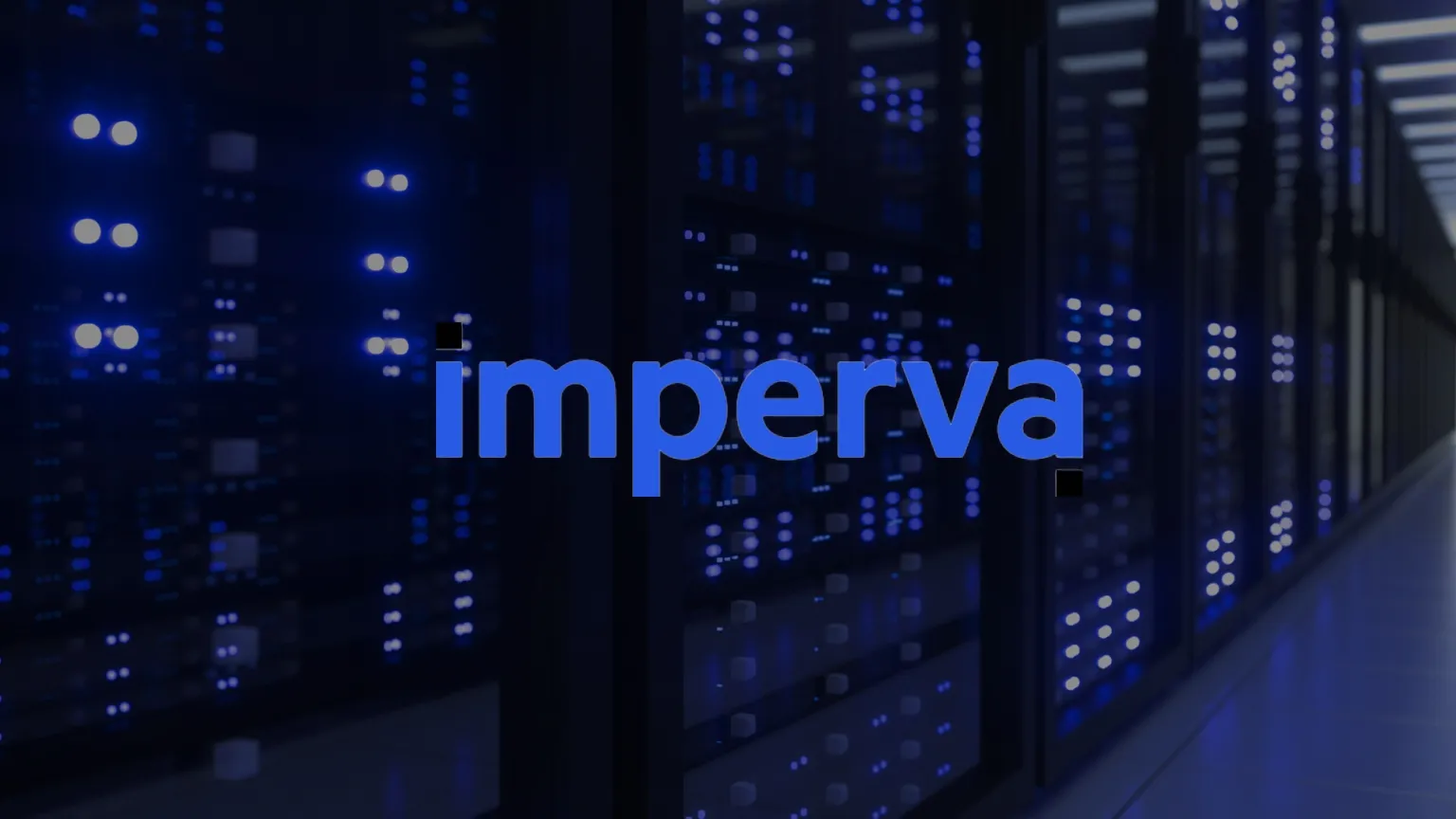
Overview: Imperva’s WAF solution is a comprehensive security platform that provides a multilayered defense against common web application attacks, such as SQL injection and cross-site scripting (XSS), and helps organizations meet regulatory compliance requirements. The WAF solution integrates with other Imperva security products to provide a complete security solution for web applications.
Imperva WAF Solutions Features
- Multi-layered security: Imperva’s WAF solution provides multi-layered security, including a combination of signature-based and behavioral-based security measures, to ensure that web applications are protected against a wide range of threats.
- Real-time protection: Imperva’s WAF solution provides real-time protection against web application attacks, so that organizations can respond quickly to threats and minimize damage.
- Customizable security policies: Organizations can create custom security policies that are tailored to their specific security needs and requirements.
- Integration with other Imperva security products: Imperva’s WAF solution integrates with other Imperva security products, such as the SecureSphere Web Application Firewall and the SecureSphere Database Security solution, to provide a comprehensive security solution for web applications.
Imperva WAF Solutions Models and Editions
- Imperva SecureSphere Web Application Firewall: This is a hardware-based WAF solution that provides high-performance security for web applications. The SecureSphere Web Application Firewall supports up to 10 Gbps throughput and up to 10 million HTTP transactions per second.
- Imperva SecureSphere Virtual Web Application Firewall: This is a virtual appliance-based WAF solution that provides the same high-performance security as the hardware-based solution, but is designed for virtualized environments. The SecureSphere Virtual Web Application Firewall supports up to 2 Gbps throughput and up to 2 million HTTP transactions per second.
Regardless of which edition of Imperva’s WAF solution an organization chooses, they can be confident that their web applications are protected against common web application attacks and that they have access to the powerful security features offered by Imperva.
Akamai WAF Solutions
Akamai Web Application Firewall (WAF) is a cloud-based security solution that provides protection for web applications against common web-based attacks, such as SQL injection, cross-site scripting (XSS), and other types of attacks. Akamai WAF is part of the Akamai Intelligent Edge Platform and is designed to work in conjunction with other Akamai security services, such as DDoS protection and bot management.
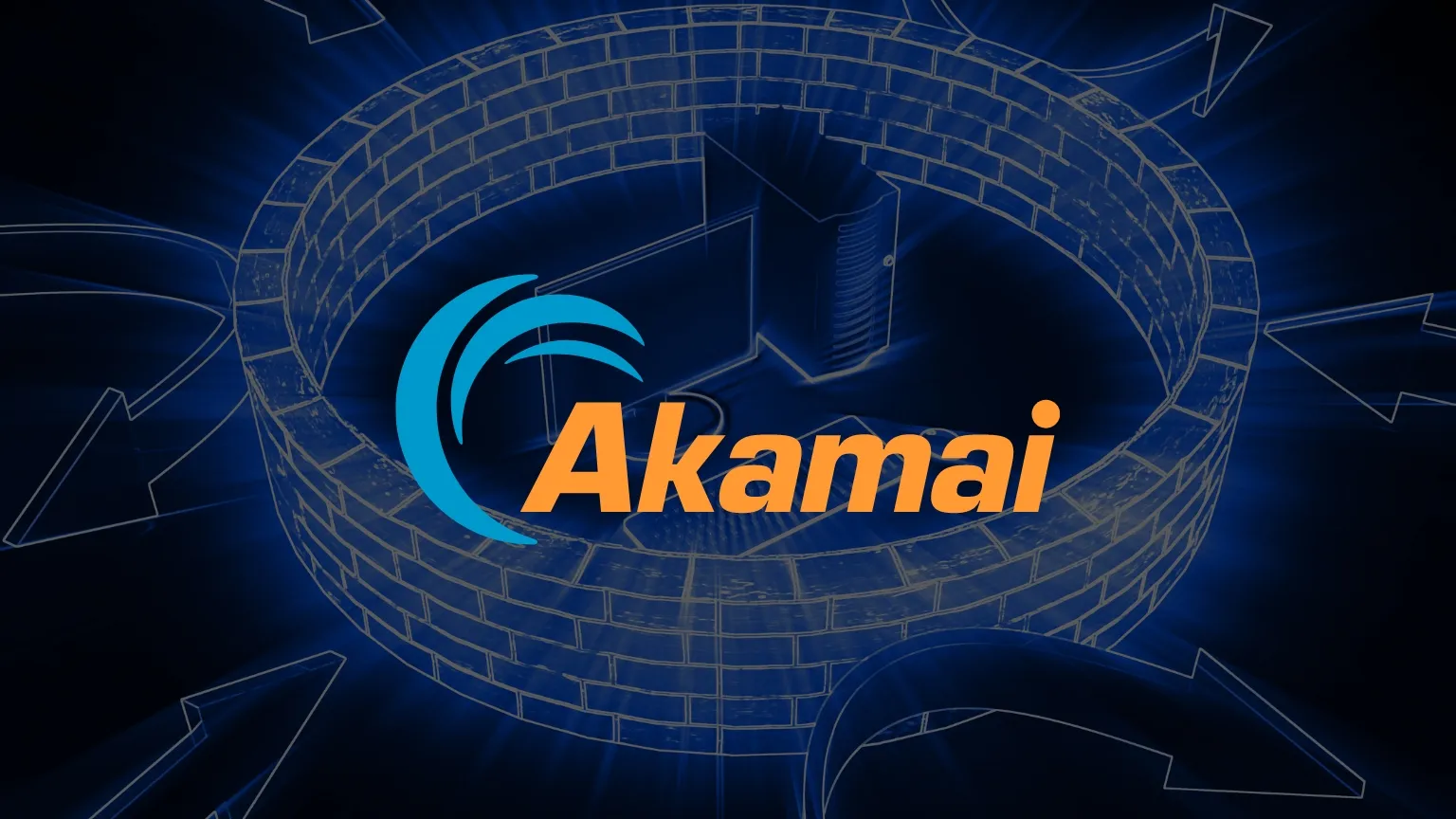
Features of Akamai WAF include
- Real-time protection: Akamai WAF provides real-time protection against web-based attacks, allowing organizations to block attacks before they can cause harm.
- Custom security rules: Akamai WAF allows organizations to define custom security rules based on their specific security needs. These rules can be used to block specific types of traffic or to allow only traffic that meets certain criteria.
- DDoS protection: Akamai WAF provides protection against Distributed Denial of Service (DDoS) attacks, which can cause websites to become unavailable.
- Bot management: Akamai WAF provides protection against automated attacks from bots, which can be used to carry out attacks such as web scraping, brute-force attacks, and spam.
- Real-time analytics and reporting: Akamai WAF provides real-time analytics and reporting to help organizations understand the security threats facing their web applications.
Akamai WAF is available in two editions: Pro and Enterprise
Capacity details for Akamai WAF are not publicly available, as the specific capacity will depend on a variety of factors, such as the backend server being used, the amount of traffic that the backend server is receiving, and the specific configuration of the Akamai WAF solution. Organizations should consult with Akamai for specific capacity and performance information for their specific use case.
It’s important to note that Akamai is constantly improving and updating its service offerings, so the capacity of Akamai WAF may change over time. Organizations should consult the Akamai documentation for the most up-to-date information on capacity and performance.
Barracuda WAF Solutions
Barracuda Web Application Firewall (WAF) is available in several models and editions, each of which provides different levels of security and features to meet the specific needs of different organizations.
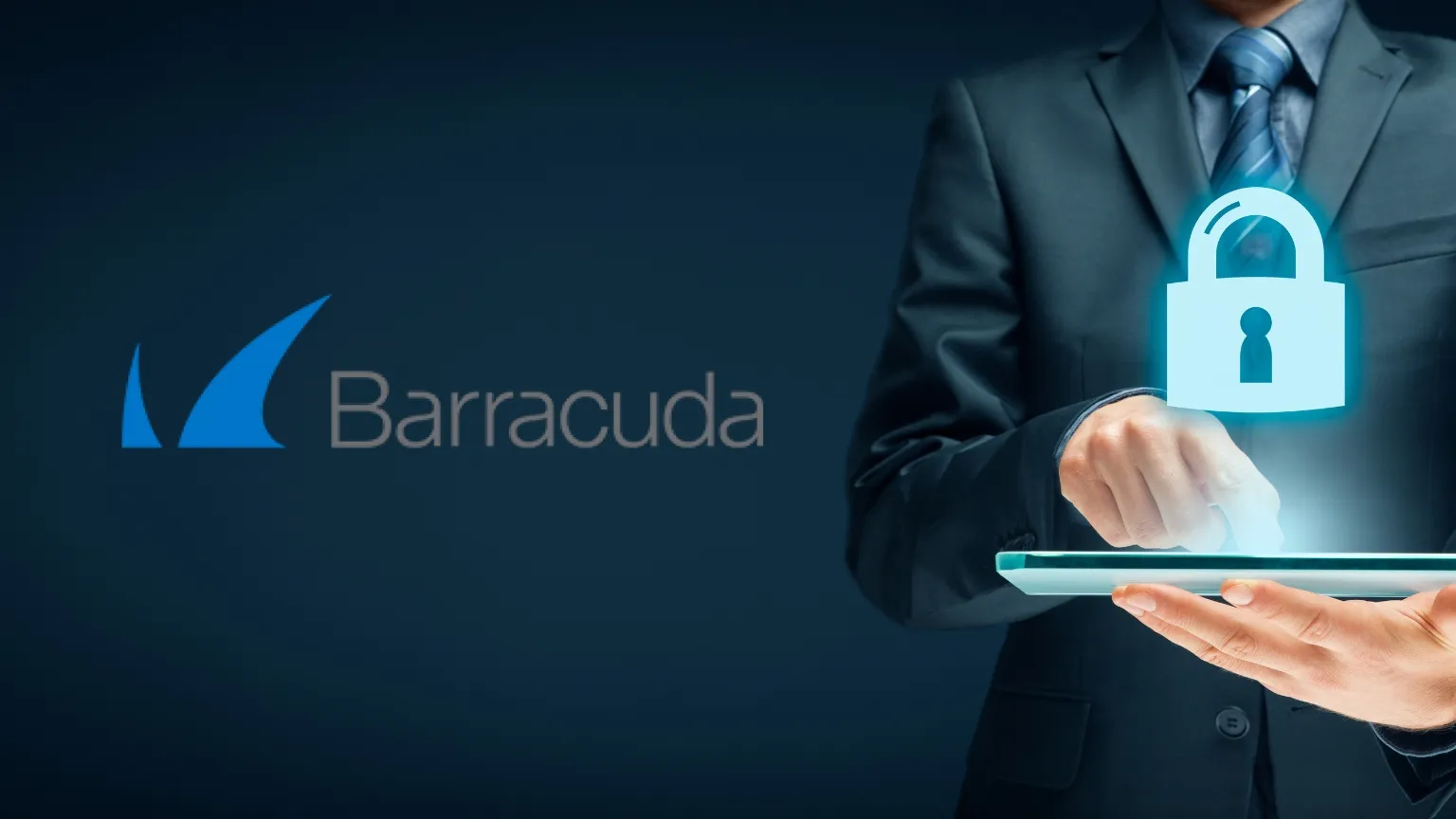
The following are some of the models and editions of Barracuda WAF:
- Barracuda WAF-Cloud: This is a cloud-based WAF solution that provides real-time protection against web-based attacks. Barracuda WAF-Cloud can be easily deployed and managed, and is designed to be highly scalable.
- Barracuda WAF-V: This is a virtual appliance-based WAF solution that can be deployed on-premises. Barracuda WAF-V provides the same security features as Barracuda WAF-Cloud, but allows organizations to run the WAF on their own hardware.
- Barracuda WAF-VM: This is a virtual machine-based WAF solution that can be deployed on-premises or in the cloud. Barracuda WAF-VM provides the same security features as Barracuda WAF-V, but allows organizations to run the WAF on their own virtual machine.
In terms of capacity, the specific performance and capacity of Barracuda WAF will depend on a variety of factors, such as the backend server being used, the amount of traffic that the backend server is receiving, and the specific configuration of the Barracuda WAF solution. Organizations should consult with Barracuda for specific capacity and performance information for their specific use case.
Check details about models and brief information: https://www.barracuda.com/products/application-cloud-security/web-application-firewall/models
F5 WAF Solution
F5 BIG-IP Application Delivery Controller (ADC) is a family of hardware and virtualized application delivery solutions designed to provide security, performance, and availability for applications. BIG-IP ADC includes a web application firewall (WAF) solution, which provides protection against web application threats such as SQL injection, cross-site scripting, and other OWASP Top 10 threats.

F5 WAF Solution Features
- Advanced Threat Protection: F5 BIG-IP WAF provides advanced threat protection using signature-based, behavioral-based, and reputation-based analysis to identify and block malicious traffic.
- Dynamic Application Security: F5 BIG-IP WAF provides dynamic application security through real-time analysis of application traffic and content, allowing for continuous security monitoring and enforcement.
- Centralized Management: BIG-IP ADC provides centralized management, making it easier to manage and maintain the security and performance of multiple applications.
- Flexible Deployment: BIG-IP ADC provides flexible deployment options, including hardware, virtual, and cloud-based solutions, to accommodate a range of deployment scenarios and infrastructures.
F5 WAF Solution Models & Editions
- BIG-IP Virtual Edition (VE) - A virtual appliance that can be deployed on a virtual machine or in the cloud.
- BIG-IP Advanced Firewall Manager (AFM) - A hardware appliance that provides advanced firewall and security functions.
- BIG-IP Local Traffic Manager (LTM) - A hardware appliance that provides advanced traffic management and load balancing capabilities.
F5 WAF Solution Capacity
- Backend Servers: The number of backend servers supported by BIG-IP ADC varies depending on the model and edition.
- Throughput: The maximum throughput of BIG-IP ADC varies depending on the model and edition, with some models capable of handling over 100 Gbps.
- HTTP Transactions/Sec: The maximum number of HTTP transactions per second supported by BIG-IP ADC varies depending on the model and edition, with some models capable of handling over 2 million HTTP transactions per second.
- SSL Transactions/Sec: The maximum number of SSL transactions per second supported by BIG-IP ADC varies depending on the model and edition, with some models capable of handling over 2 million SSL transactions per second.
Note that these capacity details are subject to change and may vary depending on the specific configuration, hardware, and software versions in use. It is always best to consult the F5 BIG-IP ADC datasheet for the most up-to-date and accurate information.
Fortinet WAF Solution
Fortinet Web Application Firewall (WAF) is a security solution designed to protect web applications from threats such as cross-site scripting (XSS), SQL injection, and other OWASP Top 10 vulnerabilities. It provides advanced security features, including application-layer protection, intrusion prevention, and bot protection.
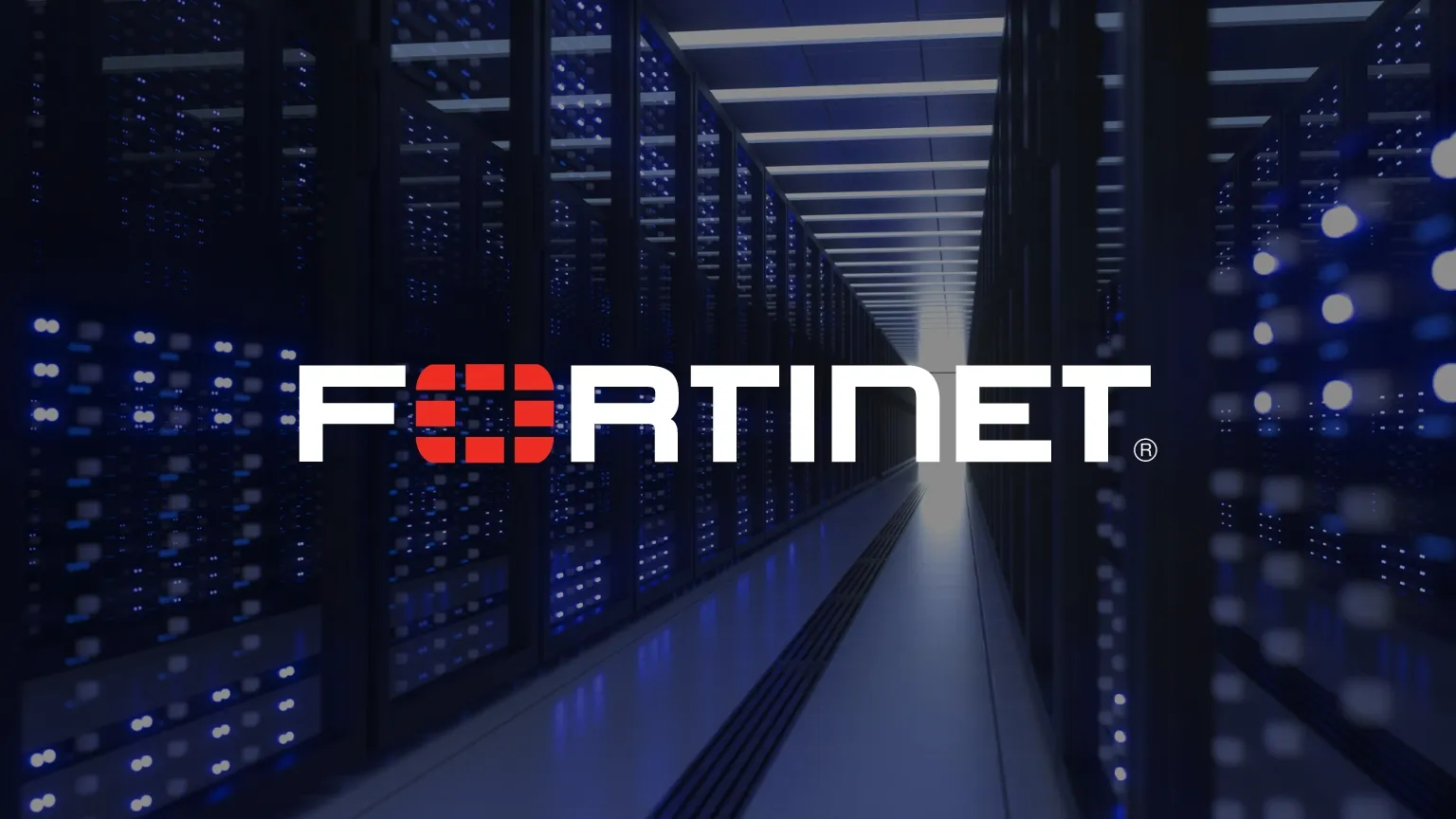
Fortinet WAF Solution Features
- Application-Layer Protection: Fortinet WAF provides application-layer protection, inspecting all incoming traffic and blocking malicious requests based on pre-defined policies.
- Intrusion Prevention: Fortinet WAF includes an intrusion prevention system (IPS) to detect and block malicious traffic in real-time.
- Bot Protection: Fortinet WAF includes bot protection capabilities to prevent automated attacks and to ensure that only legitimate traffic reaches the protected application.
- Real-time Threat Intelligence: Fortinet WAF integrates with Fortinet’s Threat Intelligence Service to provide real-time threat intelligence and automatic protection against newly discovered threats.
Fortinet WAF Solution Models & Editions
- FortiWeb Cloud WAF - A cloud-based WAF solution for protecting web applications hosted in the cloud.
- FortiWeb Hardware WAF - A hardware-based WAF solution for protecting on-premise web applications.
Fortinet WAF Solution Capacity
- Backend Servers: The number of backend servers supported by Fortinet WAF varies depending on the model and edition.
- Throughput: The maximum throughput of Fortinet WAF varies depending on the model and edition, with some models capable of handling over 20 Gbps.
- HTTP Transactions/Sec: The maximum number of HTTP transactions per second supported by Fortinet WAF varies depending on the model and edition, with some models capable of handling over 2 million HTTP transactions per second.
- SSL Transactions/Sec: The maximum number of SSL transactions per second supported by Fortinet WAF varies depending on the model and edition, with some models capable of handling over 200,000 SSL transactions per second.
Note that these capacity details are subject to change and may vary depending on the specific configuration, hardware, and software versions in use. It is always best to consult the Fortinet WAF datasheet for the most up-to-date and accurate information.
Citrix WAF Solution
Citrix Web Application Firewall (WAF) is a security solution designed to protect web applications from cyber threats such as cross-site scripting (XSS), SQL injection, and other OWASP Top 10 vulnerabilities. It provides advanced security features and is designed to secure both on-premise and cloud-based applications.

Citrix WAF Solution Features
- Application-Layer Protection: Citrix WAF provides application-layer protection, inspecting all incoming traffic and blocking malicious requests based on pre-defined policies.
- Intrusion Prevention: Citrix WAF includes an intrusion prevention system (IPS) to detect and block malicious traffic in real-time.
- Bot Protection: Citrix WAF includes bot protection capabilities to prevent automated attacks and to ensure that only legitimate traffic reaches the protected application.
- Real-time Threat Intelligence: Citrix WAF integrates with Citrix’s Threat Intelligence Service to provide real-time threat intelligence and automatic protection against newly discovered threats.
Citrix WAF Solution Models & Editions
- Citrix ADC WAF: A hardware-based WAF solution for protecting on-premise web applications.
- Citrix ADC MPX WAF: A hardware-based WAF solution for protecting on-premise web applications with higher performance and scalability requirements.
- Citrix ADC SDX WAF: A hardware-based WAF solution for service providers and data centers.
- Citrix ADC VPX WAF: A virtual appliance-based WAF solution for protecting web applications in virtualized environments.
- Citrix ADC CPX WAF: A container-based WAF solution for protecting web applications deployed in containerized environments.
Citrix WAF Solution Capacity
- Backend Servers: The number of backend servers supported by Citrix WAF varies depending on the model and edition, with some models supporting thousands of backend servers.
- Throughput: The maximum throughput of Citrix WAF varies depending on the model and edition, with some models capable of handling over 100 Gbps.
- HTTP Transactions/Sec: The maximum number of HTTP transactions per second supported by Citrix WAF varies depending on the model and edition, with some models capable of handling over 5 million HTTP transactions per second.
- SSL Transactions/Sec: The maximum number of SSL transactions per second supported by Citrix WAF varies depending on the model and edition, with some models capable of handling over 500,000 SSL transactions per second.
Note that these capacity details are subject to change and may vary depending on the specific configuration, hardware, and software versions in use. It is always best to consult the Citrix WAF datasheet for the most up-to-date and accurate information.
Radware WAF Solutions
Radware Web Application Firewall (WAF) is a security solution designed to protect web applications from cyber threats such as cross-site scripting (XSS), SQL injection, and other OWASP Top 10 vulnerabilities. It provides advanced security features and is designed to secure both on-premise and cloud-based applications.

Radware WAF Solutions Features
- Application-Layer Protection: Radware WAF provides application-layer protection, inspecting all incoming traffic and blocking malicious requests based on pre-defined policies.
- Real-time Threat Intelligence: Radware WAF integrates with Radware’s Threat Intelligence Service to provide real-time threat intelligence and automatic protection against newly discovered threats.
- Bot Protection: Radware WAF includes bot protection capabilities to prevent automated attacks and to ensure that only legitimate traffic reaches the protected application.
- Virtual Patching: Radware WAF includes virtual patching capabilities, allowing administrators to quickly and easily protect against known vulnerabilities without having to wait for a software patch to be released.
Radware WAF Solutions Models & Editions
- Radware Alteon WAF: A hardware-based WAF solution for protecting on-premise web applications.
- Radware Alteon VA WAF: A virtual appliance-based WAF solution for protecting web applications in virtualized environments.
- Radware Alteon ADCaaS WAF: A cloud-based WAF solution for protecting web applications deployed in the cloud.
Radware WAF Solutions Capacity
- Backend Servers: The number of backend servers supported by Radware WAF varies depending on the model and edition, with some models supporting thousands of backend servers.
- Throughput: The maximum throughput of Radware WAF varies depending on the model and edition, with some models capable of handling over 100 Gbps.
- HTTP Transactions/Sec: The maximum number of HTTP transactions per second supported by Radware WAF varies depending on the model and edition, with some models capable of handling over 5 million HTTP transactions per second.
- SSL Transactions/Sec: The maximum number of SSL transactions per second supported by Radware WAF varies depending on the model and edition, with some models capable of handling over 500,000 SSL transactions per second.
Note that these capacity details are subject to change and may vary depending on the specific configuration, hardware, and software versions in use. It is always best to consult the Radware WAF datasheet for the most up-to-date and accurate information.
Check Point WAF Solution
Check Point Web Application Firewall (WAF) is a security solution designed to protect web applications from cyber threats such as cross-site scripting (XSS), SQL injection, and other OWASP Top 10 vulnerabilities. It provides advanced security features and is designed to secure both on-premise and cloud-based applications.

Check Point WAF Solution Features
- Threat Prevention: Check Point WAF provides threat prevention capabilities, blocking malicious requests based on pre-defined policies and real-time threat intelligence.
- Bot Protection: Check Point WAF includes bot protection capabilities to prevent automated attacks and to ensure that only legitimate traffic reaches the protected application.
- Virtual Patching: Check Point WAF includes virtual patching capabilities, allowing administrators to quickly and easily protect against known vulnerabilities without having to wait for a software patch to be released.
- Compliance and Auditing: Check Point WAF includes compliance and auditing features, helping organizations meet regulatory requirements and ensuring that web application security policies are properly enforced.
Check Point WAF Solution Models & Editions
- Check Point Power-1 WAF: A hardware-based WAF solution for protecting on-premise web applications.
- Check Point Virtual Power-1 WAF: A virtual appliance-based WAF solution for protecting web applications in virtualized environments.
- Check Point CloudGuard WAF: A cloud-based WAF solution for protecting web applications deployed in the cloud.
Check Point WAF Solution Capacity
- Backend Servers: The number of backend servers supported by Check Point WAF varies depending on the model and edition, with some models supporting thousands of backend servers.
- Throughput: The maximum throughput of Check Point WAF varies depending on the model and edition, with some models capable of handling over 100 Gbps.
- HTTP Transactions/Sec: The maximum number of HTTP transactions per second supported by Check Point WAF varies depending on the model and edition, with some models capable of handling over 5 million HTTP transactions per second.
- SSL Transactions/Sec: The maximum number of SSL transactions per second supported by Check Point WAF varies depending on the model and edition, with some models capable of handling over 500,000 SSL transactions per second.
Note that these capacity details are subject to change and may vary depending on the specific configuration, hardware, and software versions in use. It is always best to consult the Check Point WAF datasheet for the most up-to-date and accurate information.
Juniper WAF Solution
Juniper Web Application Firewall (WAF) is a security solution designed to protect web applications from cyber threats such as cross-site scripting (XSS), SQL injection, and other OWASP Top 10 vulnerabilities. It provides advanced security features and is designed to secure both on-premise and cloud-based applications.

Juniper WAF Solution Features
- Threat Prevention: Juniper WAF provides threat prevention capabilities, blocking malicious requests based on pre-defined policies and real-time threat intelligence.
- Bot Protection: Juniper WAF includes bot protection capabilities to prevent automated attacks and to ensure that only legitimate traffic reaches the protected application.
- Virtual Patching: Juniper WAF includes virtual patching capabilities, allowing administrators to quickly and easily protect against known vulnerabilities without having to wait for a software patch to be released.
- Compliance and Auditing: Juniper WAF includes compliance and auditing features, helping organizations meet regulatory requirements and ensuring that web application security policies are properly enforced.
Juniper WAF Solution Models & Editions
- Juniper WAF-5000: A hardware-based WAF solution for protecting on-premise web applications.
- Juniper WAF-3000: A virtual appliance-based WAF solution for protecting web applications in virtualized environments.
- Juniper WAF-as-a-Service: A cloud-based WAF solution for protecting web applications deployed in the cloud.
Juniper WAF Solution Capacity
- Backend Servers: The number of backend servers supported by Juniper WAF varies depending on the model and edition, with some models supporting thousands of backend servers.
- Throughput: The maximum throughput of Juniper WAF varies depending on the model and edition, with some models capable of handling over 100 Gbps.
- HTTP Transactions/Sec: The maximum number of HTTP transactions per second supported by Juniper WAF varies depending on the model and edition, with some models capable of handling over 5 million HTTP transactions per second.
- SSL Transactions/Sec: The maximum number of SSL transactions per second supported by Juniper WAF varies depending on the model and edition, with some models capable of handling over 500,000 SSL transactions per second.
Note that these capacity details are subject to change and may vary depending on the specific configuration, hardware, and software versions in use. It is always best to consult the Juniper WAF datasheet for the most up-to-date and accurate information.
When a company required WAF Solutions? Is there any requirements to take WAF Solutions for Bank, Finance or Fintech Companies? Brief discussion
A company may require a WAF solution if it has a web application that is exposed to the internet and needs to be protected from a variety of cyber attacks, such as SQL injection, cross-site scripting, and DDoS attacks. WAF solutions are especially important for companies that process sensitive information, such as financial information, as these companies have a responsibility to protect their customers’ data.
For bank, finance, and fintech companies, the use of WAF solutions is often a regulatory requirement. For example, in the financial industry, regulations such as Payment Card Industry Data Security Standard (PCI DSS) and the General Data Protection Regulation (GDPR) require companies to implement strong security measures to protect customer information. WAF solutions can help these companies meet these regulatory requirements by providing an additional layer of security for their web applications.
In summary, companies that have web applications that process sensitive information, such as financial information, may be required to use WAF solutions to meet regulatory requirements and protect their customers’ data. WAF solutions can help these companies prevent cyber attacks and protect against data breaches.
